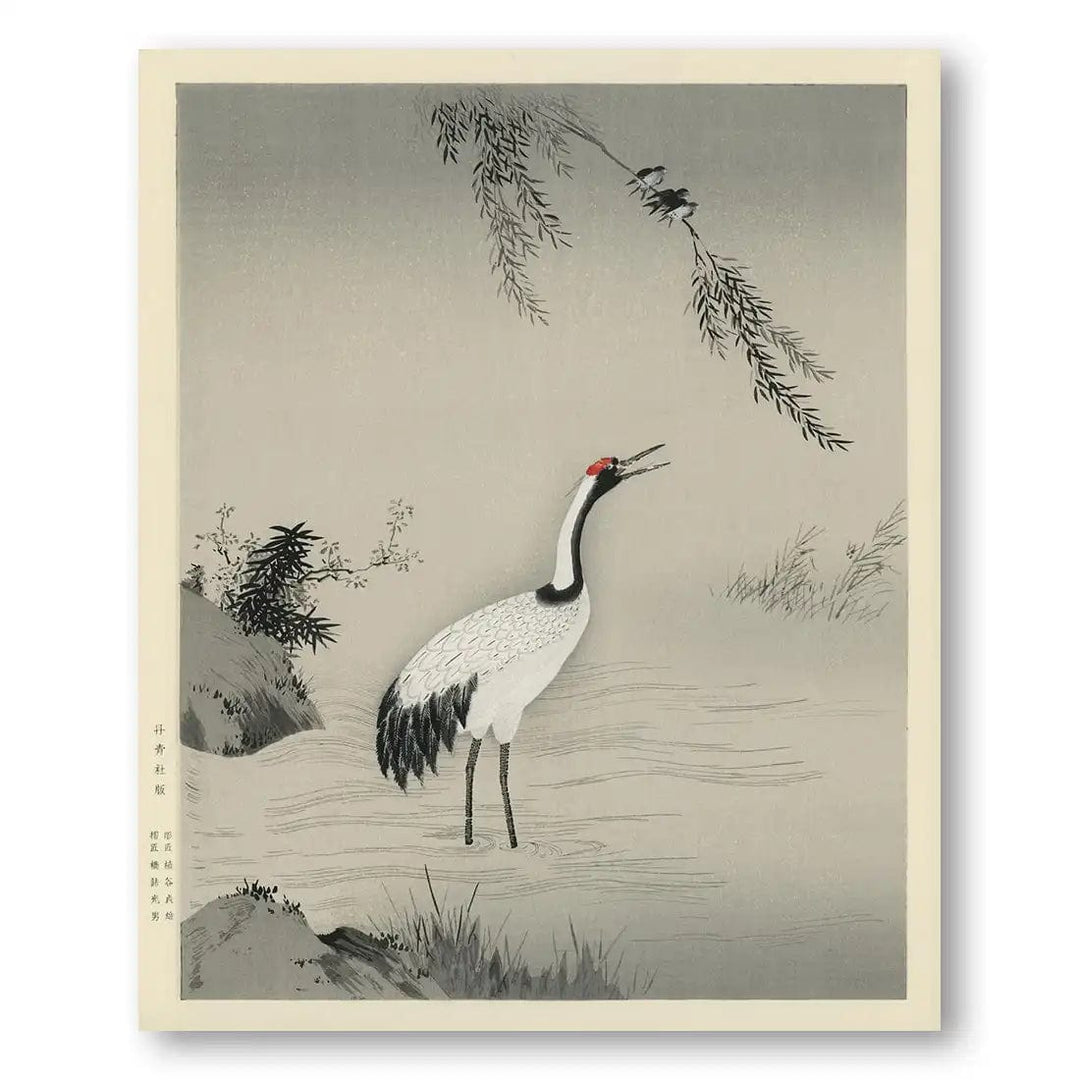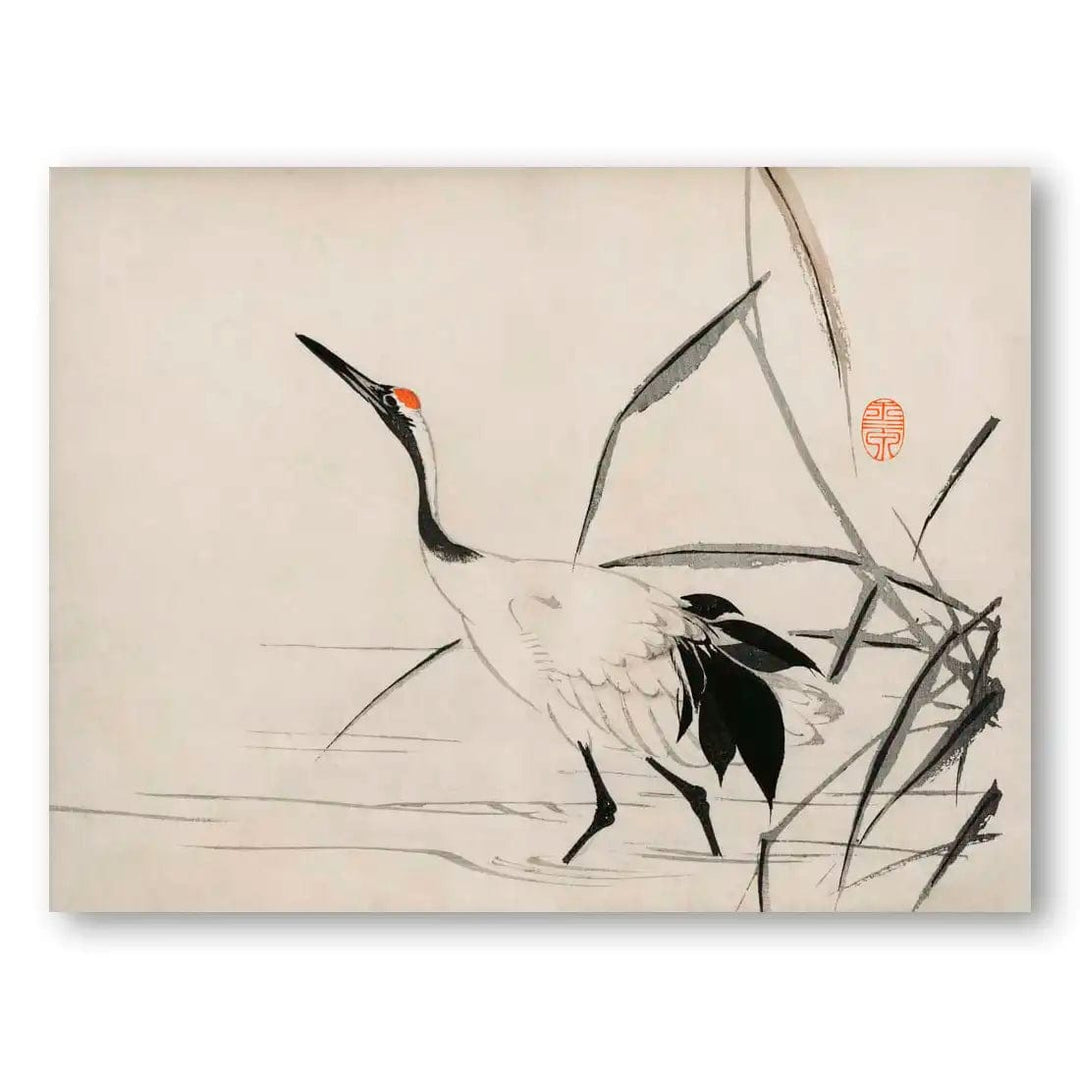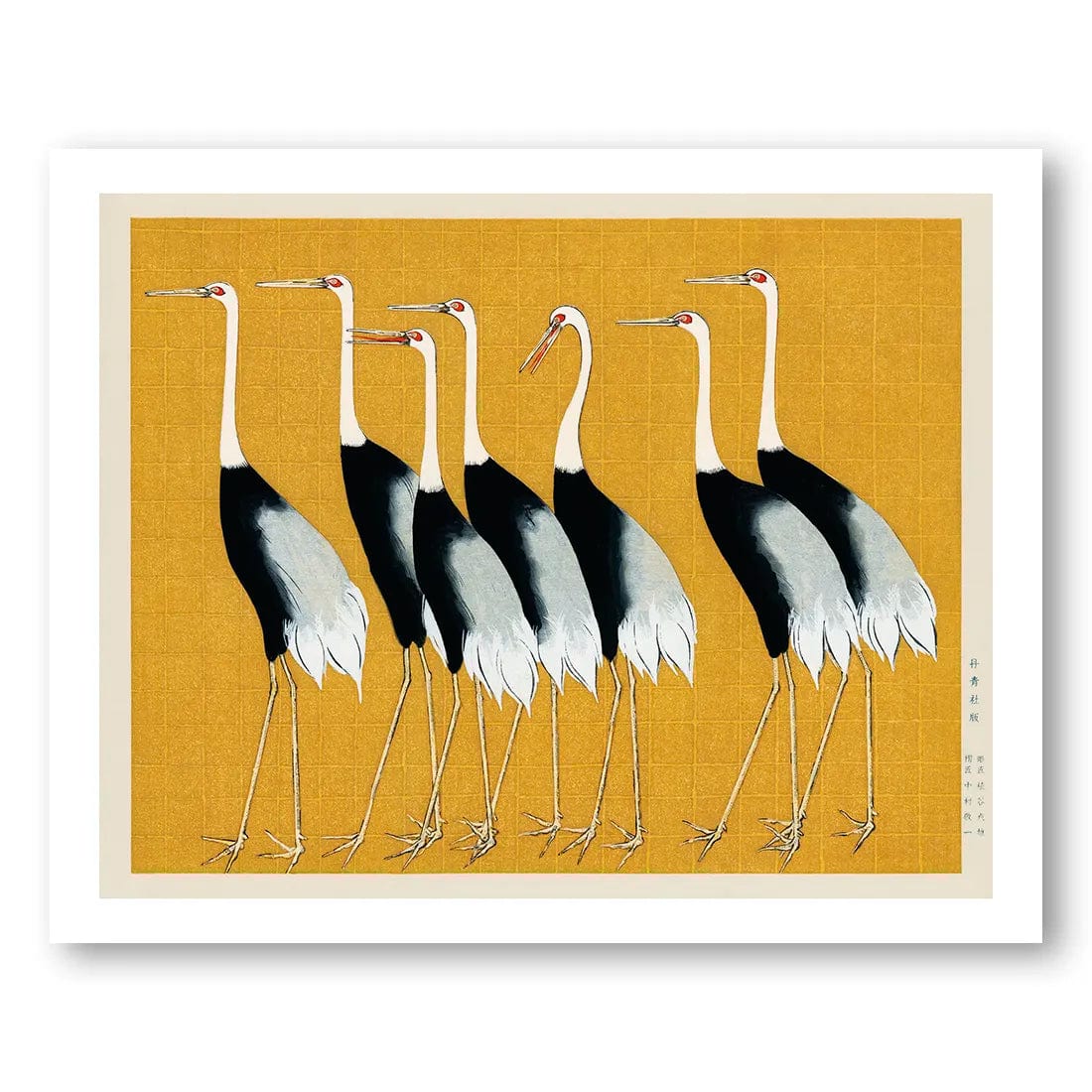Key Takeaways
- Japanese cranes symbolize good fortune, longevity, and peace with over 1,800 red-crowned cranes currently living in East Hokkaido
- They play central roles in Japanese festivals like Tanabata and traditional wedding ceremonies
- The legend of folding 1000 cranes (Senbazuru) is tied to wishes, healing, and world peace
- Modern conservation efforts have helped the Japanese population recover from near extinction
📖 Article Contents
- The Crane in Japanese Culture
- Migration Patterns & Conservation
- Cranes in Japanese Festivals & Ceremonies
- 🎨 Discover Your Crane Art Style (Interactive Quiz)
- The Symbolism of the Japanese Crane
- Modern Uses of Crane Symbolism
- Regional Variations in Crane Symbolism
- Japanese Crane Origami
- The Legend of a Thousand Cranes
The Majestic Cranes of Japanese Culture
The Japanese crane, also known as the tancho (タンチョウ), is a majestic bird with a rich cultural history spanning over a millennium in Japan. Considered a symbol of good fortune, longevity, and peace, it is often depicted in traditional Japanese art and origami. The crane's distinctive red crown and long, white feathers, along with its remarkable lifespan and lifelong mating bonds, have made it a beloved symbol in Japanese culture for centuries.

Red-crowned cranes performing their iconic courtship dance, showcasing the grace and beauty that has captivated Japanese culture for centuries

Traditional wedding uchikake featuring intricate crane embroidery symbolizing fidelity and longevity
Migration Patterns and Conservation Success
The Japanese red-crowned crane's conservation story is one of remarkable recovery. Once on the brink of extinction in the early 20th century with only 33 birds remaining in 1952, dedicated conservation efforts have successfully restored the population.

From near extinction in the 1950s to conservation success: The remarkable recovery of Japan's red-crowned crane population
Current Population & Breeding Grounds
- Hokkaido Population: Approximately 1,800 cranes live year-round in East Hokkaido
- Global Population: Estimated 3,000 birds worldwide, with over half residing in Japan
- Primary Breeding Areas: Kushiro Shitsugen National Park, Akan National Park, and surrounding wetlands
- Migration Pattern: The Hokkaido population is mostly non-migratory, moving only 150 km to wintering grounds
Unlike their mainland cousins who undertake long-distance migrations between breeding grounds in the Amur River basin and wintering areas in China and Korea, the Japanese population has adapted to Hokkaido's relatively mild climate. This sedentary lifestyle has contributed to their conservation success, making them less vulnerable to habitat loss along migration routes.

Red-crowned cranes feeding in traditional rice paddies at dawn, highlighting their adaptation to Japan's agricultural landscape
Cranes in Japanese Festivals and Ceremonies
Tanabata Festival: The Star of Wishes
During the Tanabata Festival (Star Festival) held on July 7th, paper cranes (orizuru) are one of the seven traditional decorations hung from bamboo branches. These origami cranes symbolize longevity and are believed to carry wishes to the heavens, where the star-crossed lovers Orihime and Hikoboshi meet once a year.
Wedding Ceremonies: Symbols of Eternal Love
In traditional Japanese weddings, crane motifs appear prominently in bridal attire and decorations. The bride's uchikake (outer wedding kimono) often features elaborate crane embroidery alongside other auspicious symbols. The number of cranes depicted carries specific meaning - pairs represent the couple's bond, while larger groupings symbolize family prosperity and fertility.

Exquisite detail of gold crane embroidery on a traditional wedding uchikake, symbolizing eternal love and prosperity
The Japanese Crane Wedding Ceremony Tradition
Modern Japanese couples often incorporate the "Thousand Crane Ceremony" into their weddings, where 1,000 paper cranes are released or displayed to symbolize a thousand years of happiness together. This beautiful tradition combines ancient symbolism with contemporary celebration.
🎨 Discover Your Perfect Crane Art Style
Answer a few questions to find which Japanese crane art print matches your personality and space
Modern Uses of Crane Symbolism
Contemporary Japanese Design and Corporate Identity
In modern Japan, crane symbolism has evolved beyond traditional contexts to influence contemporary design, corporate branding, and digital culture. Many Japanese companies incorporate subtle crane motifs in their logos and branding to convey values of longevity, reliability, and cultural pride.
Crane Symbolism in Modern Japan
- Digital Age Adaptation: QR codes integrated into origami crane patterns link to digital wish-making platforms
- LED Crane Displays: Modern practitioners combine traditional folding with LED lights for illuminated peace installations
- Pop Culture: Cranes appear in anime, manga, and films as symbols of hope, transformation, and spiritual guidance
- Environmental Advocacy: Crane imagery is used in climate change and conservation messaging

Modern LED crane installation in contemporary art gallery, demonstrating how traditional symbolism evolves in digital age
How to Incorporate Crane Symbolism in Modern Life
Contemporary enthusiasts can honor crane symbolism through various practices:
- Home Décor: Display authentic Japanese crane art prints in meditation or living spaces
- Mindful Folding: Practice origami crane folding as a meditation technique
- Gift-Giving: Present handmade paper cranes for special occasions like weddings or new beginnings
- Garden Design: Create crane-inspired landscape elements symbolizing longevity and peace
Regional Variations in Crane Symbolism
While crane reverence is universal across Japan, different regions have developed unique traditions and interpretations:

Regional map of Japan showing crane habitats and cultural significance across different prefectures
Prefecture-Specific Traditions
- Hokkaido: Home to Japan's largest crane population, local festivals celebrate conservation success with crane-watching tours and educational programs
- Hiroshima: The Sadako memorial has made this prefecture the global center for paper crane peace symbolism
- Sendai (Miyagi): The largest Tanabata festival features elaborate crane decorations and the tradition of communal thousand-crane projects
- Kyoto: Traditional wedding ceremonies maintain authentic crane symbolism in textiles and ceremonial objects
- Kagoshima: Southern regions associate cranes with seasonal migration and agricultural prosperity
The Symbolism of the Japanese Crane

Visual guide to Japanese crane symbolism and cultural meanings throughout history
- Good Fortune: Cranes are believed to bring luck and prosperity to those who encounter them.
- Longevity: Their remarkably long lifespan (up to 60 years in the wild) represents wishes for a long and healthy life.
- Peace: Often used in anti-war protests and peace symbolism, especially following Sadako Sasaki's story.
- Fidelity: Cranes mate for life, symbolizing lasting relationships and marital devotion.
- Spiritual Guidance: In Shinto beliefs, cranes serve as messengers between the earthly and divine realms.
"The crane is said to live for a thousand years: That is why it is a symbol of longevity and good luck in Japan." - Traditional Japanese Proverb
Japanese Crane Origami

The art of origami crane folding: where paper becomes poetry in motion
Origami, the art of paper folding, is an integral part of Japanese culture, and the Japanese crane is one of the most popular and significant subjects for origami artists. The practice of folding cranes is said to bring good luck and peace, and the creation of 1000 cranes grants a wish for long life and good health.
Understanding the Crane Folding Tradition
Watch this educational video that demonstrates the cultural significance and meditative aspects of crane origami:
The Legend of a Thousand Cranes
The Origin Story
The legend of a thousand cranes, also known as Senbazuru (千羽鶴), is a profound Japanese tradition passed down for generations. According to the legend, if someone folds 1000 paper cranes, the gods will grant their deepest wish. This practice originated from ancient beliefs about the crane's mystical connection to the divine realm.
Modern Impact: Sadako's Legacy
The legend gained international recognition through the story of Sadako Sasaki, a young girl who became ill with leukemia due to radiation exposure from the Hiroshima atomic bombing. Sadako believed that if she could fold 1000 cranes, she would be granted a wish for healing and good health. Though she passed away before completing her goal, her story transformed the paper crane into a universal symbol of peace.

Thousands of origami cranes at peace memorials worldwide carry messages of hope and healing
Japanese Crane Art Prints
Bring the elegance and symbolism of Japanese cranes into your home with these museum-quality art prints. These prints are part of our Japanese wall art print collection, where you can find more stunning pieces to complement your décor and honor this ancient cultural tradition.
🌸 Complete Your Japanese Collection: Explore our curated selection of vintage crane art prints and discover complementary pieces from our vintage bird art collection to create a harmonious space celebrating Japanese aesthetics.
Conclusion
The Japanese crane stands as a timeless bridge between ancient wisdom and contemporary relevance. From its near-extinction to conservation success, from traditional festivals to modern peace movements, and from museum galleries to digital art platforms, the crane continues to inspire and unite people across cultures.
Whether you're drawn to the meditative practice of origami folding, the aesthetic beauty of traditional art, or the profound symbolism of hope and longevity, the Japanese crane offers countless ways to enrich your understanding of this remarkable cultural treasure. Consider adding a Japanese crane art print to your home to bring a touch of this rich cultural heritage and timeless wisdom into your daily life.
🕊️ Share the Beauty of Crane Culture
Help preserve and celebrate Japanese cultural heritage by sharing this article with others who appreciate art, culture, and the profound wisdom of ancient traditions.

Nikki Sandeman
Art Lover & Décor Specialist | Founder
With a 15-year journey renovating homes and styling living spaces, Nikki specializes in helping readers integrate unique wall art and cultural pieces into modern interiors. Her expertise in combining traditional artistry with contemporary design creates spaces that tell meaningful stories.
📚 Sources, Methodology & Transparency
Research Methodology
This article was researched through consultation with Japanese cultural experts, review of academic papers from ornithology and cultural studies journals, and verification of conservation data from official Japanese government sources. All product recommendations are based on actual store inventory and authentic cultural relevance.
Commercial Disclosure
🛍️ Transparency Notice: This article contains links to art prints in our collection. We earn a commission from qualifying purchases at no additional cost to you. All featured artworks were selected for their cultural authenticity and artistic merit, not commercial considerations.
Cultural Interpretation Disclaimer
Cultural meanings and traditions may vary by region, family lineage, and individual interpretation. This article presents widely accepted cultural understandings while acknowledging the rich diversity within Japanese cultural practices.
Authoritative Sources & Further Reading
- Japan Tourism Agency: Red-crowned Cranes in Kushiro
- Japanese Government: Crane Conservation Statistics
- Japanese Mythology & Cultural Studies
- Academic Sources: Tanabata Festival Traditions
- International Crane Foundation: Conservation Data
- Scientific Research: Crane Ecology Studies
Last updated: September 2025 | Next review: March 2026












